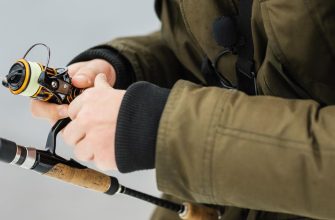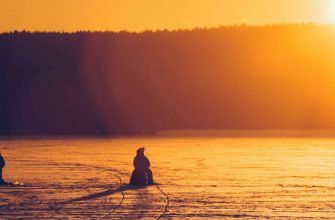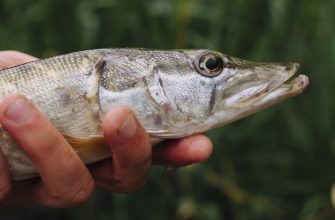Every fisherman has repeatedly experienced that in several days you plan fishing, thoroughly prepare for it, tie rigs, prepare bait and other gear, come to the reservoir – and the fish does not bite! An hour passes, the second passes, and there are no bites! Is it possible to consider such a situation hopeless and go home??? NO! You should not despair, you need to act!
Very often there is a way out of such a situation, and even the most sluggish and inactive fish can be forced to bite, you just need to find the right “key”! I myself go fishing very often, and I constantly face this problem. It happens that a friend “yesterday” caught a good amount of fish, you come to the same place the next day, the weather seems to be the same, you took the bait the same as him – but there is no bite! It is in this case that I begin to act and look for that very “key” to the fish! In this article, I will try to tell you in detail how I try to activate the fish’s bite! By the way, I want to warn you right away that these methods are applicable for the most part in feeder fishing, but their use is not excluded in other types of catching peaceful fish.
In order to activate the bite of an inactive fish, there are very simple solutions, but they need to be tried, and this should be done step by step, starting with one, and if it did not work, then move on to the next. Now let’s talk in more detail about each of these stages.
Every inexperienced fisherman going fishing takes with him not one and even not two different baits, but the more of them, the better! Yes, of course, no one excludes the fact that you will put on the first bait you come across and the fish will immediately start to bite, then you were lucky today, but our article is not about that. I always take a lot of baits with me on a fishing trip, or rather, I have a certain list of certain baits, depending on the type of fish I am going to catch. If I go fishing for carp, then in the arsenal there are such baits as: maggot, preferably both white and red, dung beetle, canned corn and обязательно перловка! And what is important, I take several types of barley, both ordinary and necessarily with garlic, and perhaps some more. If fishing involves catching bream, then there must definitely be: bloodworm, maggot, worm, steamed peas and corn (the largest specimens often peck at it).
From all of the above, we conclude that if a friend caught bream on a worm yesterday, and we do not have a single bite on the worm today, then we do not need to rely on the worm, but we need to try different baits! The more you have with you, the better! You also need to try different “sandwiches” as bait, such as maggot with bloodworm or worm, corn with maggot and others. With a huge share of probability, it can happen that one of the baits the fish will start to respond to actively!
If the first method did not work, then you can confidently move on to the second! This option for enhancing the bite is based on the fact that we will experiment with our leash, namely with its thickness and length.
By changing the length of the leash, we can to some extent activate the fish’s bite. Moreover, it can be both an increase in the length of the leash and a decrease in it. Often you can hear from fishermen the statement that the worse the fish bites, the longer the leash should be, and in part this statement is correct. A long leash allows the bait with the hook, after the feeder has fallen, for an extra second, to descend longer. Making the bait stay in the water column a little longer is a technique that will work great, not only for roach and guстера, which happily grab the descending bait, but also in some cases for more bottom fish, such as carp and bream. Also, a long leash on the current will give the hook with the bait a much greater degree of freedom. Due to this, the bait, under the influence of the current, will quite realistically move from the point of view of the fish’s attractiveness. Of course, sometimes the situation turns out to be absolutely the opposite, and the best bite can be achieved with a shorter leash, so if the fish does not bite, you need to EXPERIMENT!
Also, in addition to changing the length of the leash, reducing its thickness can work. In some cases, changing the diameter of the leash by two hundredths of a millimeter, for example from 0.14 to 0.12 or from 0.12 to 0.1, can make the fish bite. The only disadvantage when reducing the diameter of the line is the decrease in its strength. Do not forget that it is unlikely that we will be able to get a “kilosh” bream on a 0.08 mm leash, and all reductions in line thickness should be within reasonable limits.
Summarizing, we can conclude the following: the basic length of the leash we usually have is about 50 centimeters, and its thickness is 0.12 – 0.14 mm. If the bite is bad, then we begin to lengthen the leash by adding 10 – 15 centimeters each, up to 1.5 meters, and at the same time we reduce the diameter of the line in increments of two hundredths of a millimeter. If this did not work, then vice versa we shorten the leash, up to 10 centimeters, in some situations it can work.
We changed the baits, played with the leashes – but there is still no bite! Many probably in such a situation will definitely go home, but you should not do this! There is another, quite effective in some cases, method – the use of dips and various flavorings together with the bait! Any bait soaked in scent can provoke even the most passive fish to bite. Moreover, the use of flavorings for baits is suitable for both vegetable baits and baits in the form of maggots or worms. I usually have a whole set of dips on a fishing trip, such as: chocolate, plum, coriander, dill, biscuit and many others. The more dips in your arsenal, the higher the chances of finding exactly “the one” that will provoke the fish to bite!
Although this method seems simple, in fact it sometimes turns out to be extremely effective! After sitting for several hours without bites, having tried all the above methods and not getting any result from them, sometimes it’s worth just gathering up and moving to another place. It often happens that in a new place you can get to a large concentration of fish and, consequently, be left with a good catch!
In conclusion, I would like to say that very often on a fishing trip the catch depends on ourselves! You should never sit in one place for hours and wait for the fish to suddenly bite! You need to try, experiment, look for that very key to the fish, and then you will definitely not be left without a catch!




